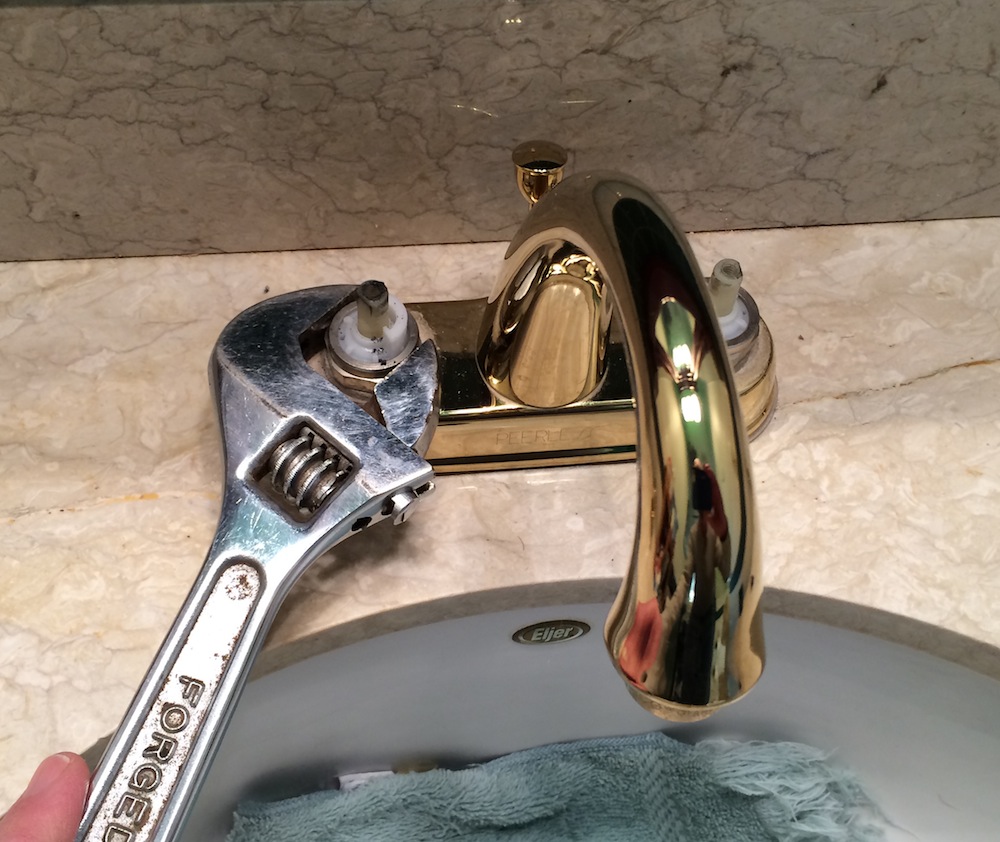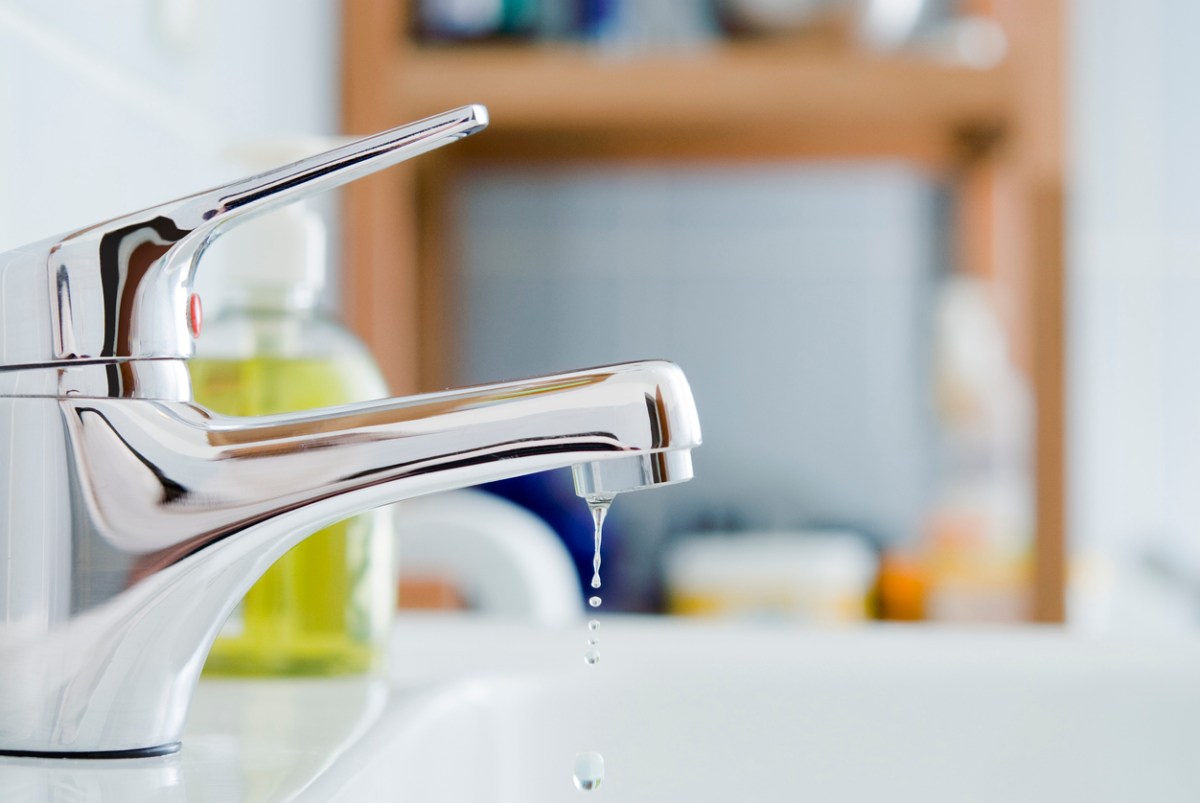Presented here in the next paragraphs you will find a good deal of helpful insight in regards to How to Fix a Dripping or Leaky Faucet .

Dripping faucets may appear like a small trouble, yet their influence surpasses just the nuisance of the noise. From drainage to incurring unnecessary monetary expenses and health and wellness dangers, disregarding a leaking tap can bring about different repercussions. In this short article, we'll delve into why it's essential to address this usual family problem promptly and effectively.
Wastefulness of Water
Environmental Impact
Trickling faucets add considerably to water wastage. According to the Epa (EPA), a single tap dripping at one drip per secondly can squander greater than 3,000 gallons of water annually. This not just strains water sources but likewise affects ecological communities and wildlife based on them.
Step-by-Step Guide to Dealing With a Dripping Faucet
Devices Called for
Before attempting to deal with a dripping faucet, collect the essential tools, including a flexible wrench, screwdrivers, substitute components (such as washers or cartridges), and plumber's tape.
Common Faucet Issues and Their Solutions
Determine the sort of tap and the details issue causing the drip. Common problems include worn-out washers, corroded valve seats, or defective O-rings. Refer to producer instructions or online tutorials for step-by-step guidance on repair services.
Financial Expenses
Enhanced Water Bills
Beyond the ecological influence, leaking faucets can inflate water costs considerably. The collected waste over time converts right into higher energy costs, which might have been avoided with prompt repair work.
Potential Property Damages
Furthermore, long term leaking can bring about damage to components and surfaces bordering the faucet. Water build-up can cause staining, deterioration, and even architectural issues if left ignored, resulting in extra fixing costs.
Health and wellness Problems
Mold and Mildew Development
The consistent presence of moisture from a leaking tap develops a perfect setting for mold and mildew and mildew growth. These fungi not just compromise indoor air top quality yet also pose health dangers, especially for individuals with breathing problems or allergies.
Waterborne Illness
Stagnant water in dripping faucets can become a breeding place for germs and other pathogens, increasing the threat of waterborne conditions. Pollutants such as Legionella bacteria thrive in stationary water, possibly resulting in serious ailments when consumed or inhaled.
Do it yourself vs. Expert Repair work
Pros and Cons of DIY Fixing
While some may try to take care of a dripping tap themselves, DIY repair services come with their very own set of difficulties. Without correct understanding and devices, DIY attempts can aggravate the issue or cause incomplete fixings, prolonging the issue.
Advantages of Hiring an Expert Plumber
Employing a specialist plumber ensures that the underlying reason for the leaking tap is addressed efficiently. Plumbing technicians have the expertise and equipment to diagnose and repair faucet issues efficiently, saving time and minimizing the risk of further damages.
Ecological Duty
Private Contribution to Conservation
Taking responsibility for fixing trickling taps lines up with wider efforts towards water preservation and ecological sustainability. Every individual's actions jointly make a considerable impact on maintaining valuable resources.
Lasting Living Practices
By prioritizing punctual repair services and adopting water-saving behaviors, individuals add to sustainable living techniques that benefit both present and future generations.
Safety nets
Regular Upkeep Tips
To prevent leaking taps, carry out regular maintenance such as cleaning up aerators, evaluating for leaks, and changing damaged parts immediately. In addition, think about mounting water-saving devices or upgrading to a lot more reliable components.
Relevance of Prompt Services
Addressing leaking taps as quickly as they're noticed protects against further water wastefulness and possible damages, ultimately saving both water and money in the long run.
Impact on Property Worth
Perception of Well-Maintained Property
Maintaining a home in good condition, including addressing upkeep problems like leaking faucets, boosts its viewed value and worth amongst potential customers or occupants.
Influence on Resale Worth
Features with well-kept plumbing fixtures, consisting of faucets, command greater resale values in the property market. Attending to dripping taps can contribute to a favorable impression during property assessments and negotiations.
Final thought
Resolving a dripping faucet surpasses mere benefit; it's a crucial step toward preserving water, reducing financial expenses, and securing wellness and residential or commercial property. Whether with do it yourself repair services or specialist aid, taking action to fix dripping faucets is a small yet impactful way to promote responsible stewardship of resources and contribute to a much healthier, extra lasting future.
How to Fix a Leaky Faucet: Step-by-Step Repair Guide
A leaky faucet may seem like a simple annoyance, but if it's not fixed promptly, that leak could cost hundreds to potentially thousands. From water damage to mold, mildew, and high water bills, even a tiny leak can be catastrophic if left unattended. Damage like this can even affect the overall value of your home, so it's important to take the right approach for leaky faucet repair. You may need the help of a plumber in some cases, but we've got a few tips you can try on how to fix a leaky faucet before calling the pros.
Four Faucet Types
When you're learning how to fix a leaky faucet, the first step is knowing what kind of faucet you're working with! There are four common types.
Cartridge Faucets
Cartridge faucets come in one- or two-handled varieties. In one-handled cartridge faucets, hot and cold water combines in a single cartridge. In the two-handled versions, hot and cold water are controlled separately and mixed in the faucet.
Ball Faucets
Ball faucets have a single lever you push up and down to adjust the pressure and rotate to change the temperature. A slotted metal ball controls the amount of water allowed into the spout.
Compression Washer Faucets
They're the oldest type of faucet, but they're still used in many homes — especially older ones. Compression faucets have two separate handles that, when turned, raise or lower the washer that seals a water valve. This valve stops water from flowing through the faucet when it is turned off.
Disc Faucets
Disc faucets rarely need to be repaired due to their maintenance-free design. The water flow is controlled by two discs — the upper one raises and lowers against a fixed lower disc, creating a watertight seal. If your disc faucet starts leaking, you may need to replace the seals or clean residue buildup from the inlets.
Fixing a Leaky Faucet
Step 1: Turn Off the Water
Whether you're learning how to fix a leaky bathtub faucet or how to fix a leaky kitchen faucet, always turn off the water supply to your working area when you're fixing a leak. The last thing you want is a flood added to your list of things to fix.
Look for the shutoff valves below your sink or around the tub and turn them clockwise to stop the water flow. If your faucet doesn't have shutoff valves, you may need to turn off the water for the whole house. Check to make sure it's off by turning the faucet on. If nothing comes out, you're ready to start the repair.
Step 2: Take Apart the Faucet
How you disassemble your faucet depends on the type of fixture you have. You can use a flathead screwdriver to remove the caps on top of the handle or handles for cartridge and compression faucets. Inside, you should see handle screws. Unscrew these with a screwdriver to remove the handle.
Disc- and ball-style faucets will typically have an inlet screw near the handle, and removing that will reveal the interior of the faucet.
Detach the Valve Stem
For cartridge- and compression-style faucets, you'll see the inner valve stem or cartridge once you remove the faucet handles. If you have a compression faucet, unscrew the brass valve stem. If you have a cartridge faucet, pull out the cartridge. If your cartridge has been in place for a while, it may require some tools or extra force to remove it due to mineral deposits.
Examine and Replace Parts
Once you've removed the parts, check them out to confirm what needs to be replaced. You may see corroded rubber washers, O-rings, stems, or cartridges. On a ball-style faucet, check the seats and springs for damage.
If you need to repair a leaky disc faucet, check the inlet and seals on the lower disc.
Once you determine what parts must be replaced, visit your local hardware store. Bring the damaged parts with you to ensure you can purchase the correct components to replace them.
Clean Valves and Faucet Cavity
If you've removed a stem or cartridge, you may notice mineral buildup in the faucet's threads. Use white vinegar to clean the valve seat by soaking it for a few minutes, then scrub it away with a soft toothbrush and rinse with warm water. You can also clean the interior of the faucet in the same way.
Reassemble the Faucet
Once your faucet is cleaned and the required parts have been replaced, it's time to reassemble it. Put the pieces back together and slowly turn the water supply back on. Doing this slowly is crucial because too much initial water pressure can damage the new hardware you've just installed.
https://homewarranty.firstam.com/blog/how-to-fix-leaky-faucet

I came across that post on 4 Common Reasons for a Leaky Faucet when exploring the web. Those who appreciated our blog post please be sure to share it. Kudos for being here. Return soon.